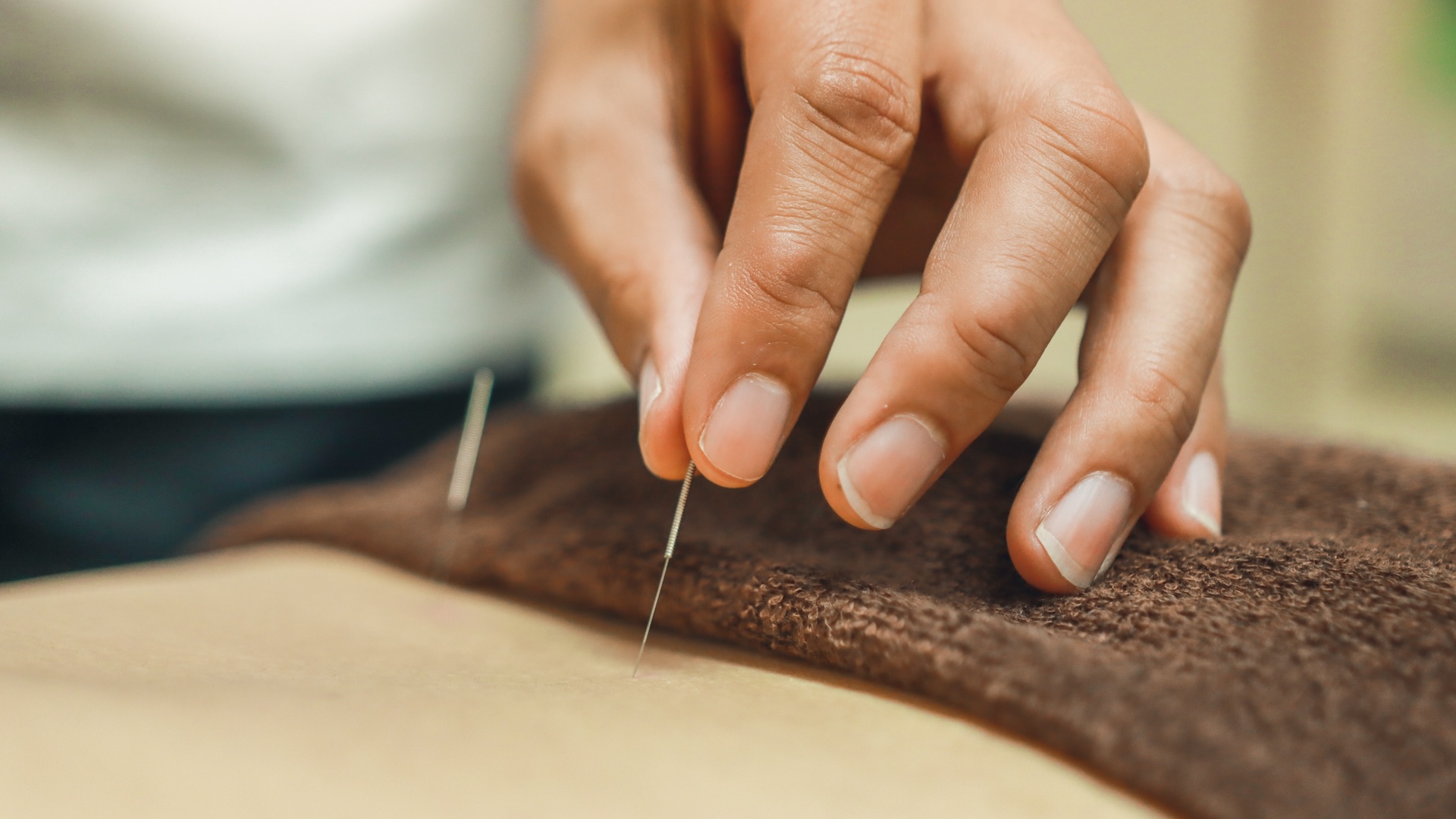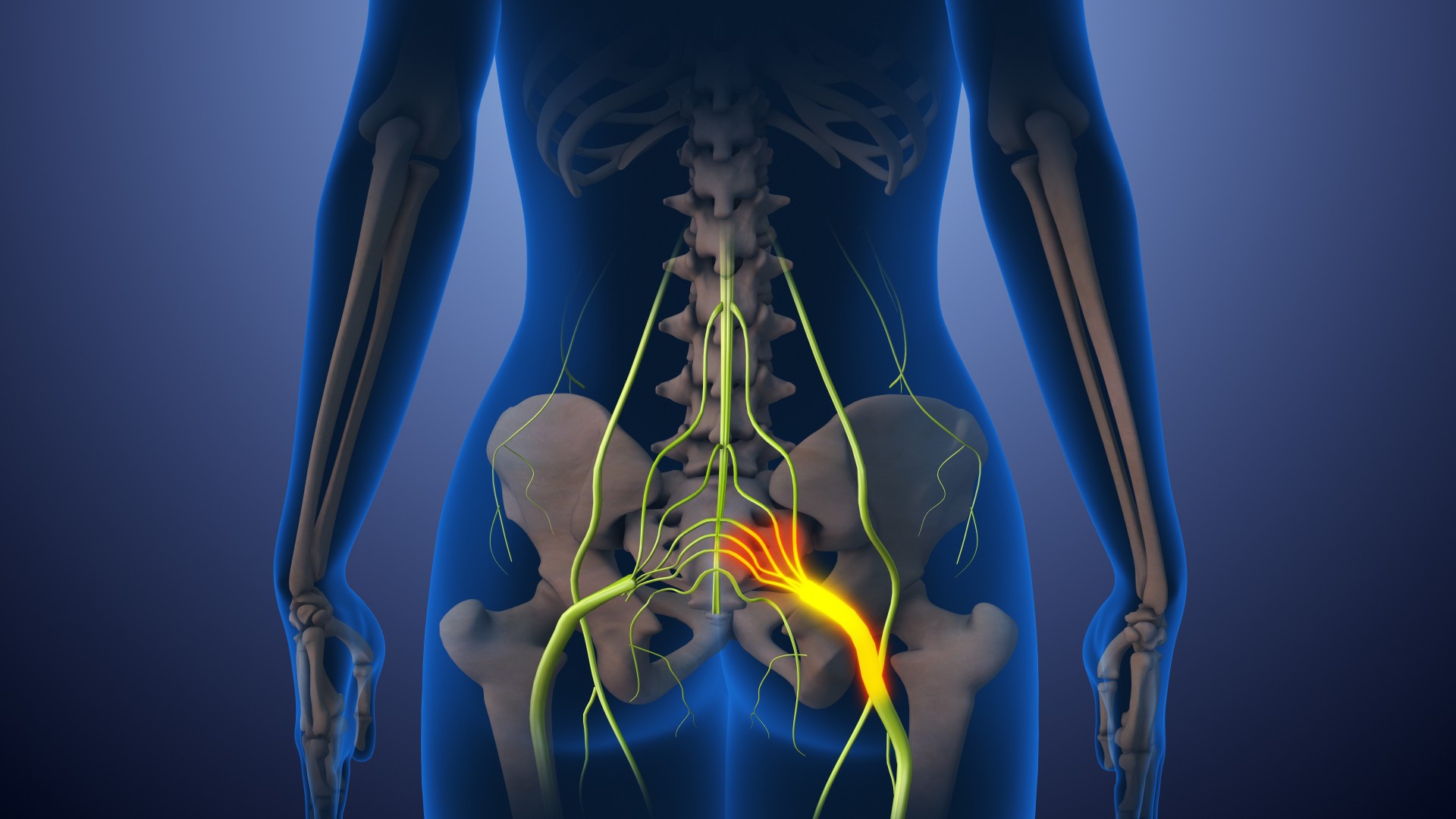
Acupuncture relieves pain and improves daily function in people with sciatica better than a sham acupuncture treatment that looks and feels very similar, a clinical trial suggests.
For the new trial, published Monday (Oct. 14) in the journal JAMA Internal Medicine, researchers recruited 220 people with sciatica, a condition that causes pain, weakness, tingling or numbness in the lower half of the body. These sensations are caused by pressure on or damage to the sciatic nerve, the largest nerve in the body; in this case, all of the patients had herniated disks that drove their sciatica.
For people with sciatica, doctors often recommend painkillers, such as over-the-counter drugs like acetaminophen (Tylenol), or prescribe medicines like opioids. Some patients get epidural injections, which are administered into the space around the spinal cord. Some people find relief through physical therapy or self-care practices, like icing or regular stretching. In very severe cases, doctors might recommend surgery to remove the parts of the spine that are pressing on the nerve.
Despite these options, "current treatments for sciatica are unsatisfying," Dr. Jerard Kneifati-Hayek of Columbia University and Dr. Mitchell Katz of NYC Health + Hospitals wrote in a commentary accompanying the new study.
Related: Mindfulness meditation really does relieve pain, brain scans reveal
That's partly because the less-aggressive treatment options don't work for everyone and because the more-aggressive options come with a risk of side effects that deter people from getting the procedures. And even then, approaches like surgery don't relieve every patient's pain.
The new trial provides some concrete evidence that acupuncture may be a helpful treatment option for sciatica. Some past studies hinted that the treatment might be effective, but limitations in their designs prevented scientists from drawing firm conclusions.
By comparison, "this was a methodologically rigorous study," wrote Kneifati-Hayek and Katz, who were not involved in the new trial. They commended the new trial for including experienced acupuncturists, a "well thought-out sham control," and a follow-up period of one year with the participants.
The trial was conducted across six hospitals in China, where all of the participants' diagnoses were confirmed by spine specialists. People with other conditions, such as different spine or neurological diseases, were not allowed to enroll. To be included in the study, all the participants had to have moderate to severe sciatica pain, not be taking any drugs with a therapeutic effect on the condition, nor could they have had acupuncture for sciatica within the past year.
The chosen participants were divided into two equal groups. The first received 10 standardized acupuncture treatment sessions for sciatica over the course of four weeks. The second received a "sham" treatment, in which practitioners placed the needles at "nonacupoints" thought to have no therapeutic effect.
"This is common practice for sham controls in acupuncture research," the study authors noted. In the sham group, most of the needles were placed on the skin but were not actually inserted, with the exception of one needle per session, to help maintain the illusion.
The researchers assessed the participants' subjective experiences of leg and back pain before the treatment began and then a number of times throughout the trial — at weeks two, four, eight, 26 and 52. They also used a questionnaire called the Oswestry Disability Index to check participants' day-to-day function — for instance, how well they could sleep, lift objects and complete personal-care tasks.

The differences between the groups became apparent by week two. Both groups saw reductions in their pain levels and improvements in their daily function, but the true-acupuncture group was faring better at every check-in. "Moreover, the differences between acupuncture and sham acupuncture groups remained statistically significant at week 52," the authors reported.
The sham group may have also experienced pain relief for several reasons, Kneifati-Hayek told Live Science in an email. For instance, because of the placebo effect, or because their symptoms just naturally improved over time, which often happens, he said.
However, the findings still demonstrated that acupuncture treatments provided some benefit "above and beyond" what was seen in the control group, he added.
This persistent result suggests that acupuncture should be considered as a treatment option for people with chronic sciatica from herniated disks, the authors concluded.
That said, the trial did have some limitations. For instance, it didn't directly compare acupuncture to other common sciatica treatments, such as painkillers or surgery. Those direct comparisons would help patients decide which treatments might be the most beneficial for them.
There were no serious side effects that required medical treatment in either group, but the acupuncture group did experience more minor side effects than the sham group did. In all, 26 participants, or 24%, of the real-acupuncture group had a side effect, with minor bleeding and hemorrhage under the skin being the most common. Only five participants in the sham group, or 4.6%, had any side effects related to the treatment.
Going forward, Kneifati-Hayek said that the study supports the idea that acupuncture could be a potentially effective evidence-based treatment for sciatica.
"Studies like this may facilitate the adoption of acupuncture as a form of treatment by health systems and insurers," he said. "It also helps patients and their clinicians make better-informed decisions about approaching sciatica treatment."
This article is for informational purposes only and is not meant to offer medical advice.
Ever wonder why some people build muscle more easily than others or why freckles come out in the sun? Send us your questions about how the human body works to community@livescience.com with the subject line "Health Desk Q," and you may see your question answered on the website!







